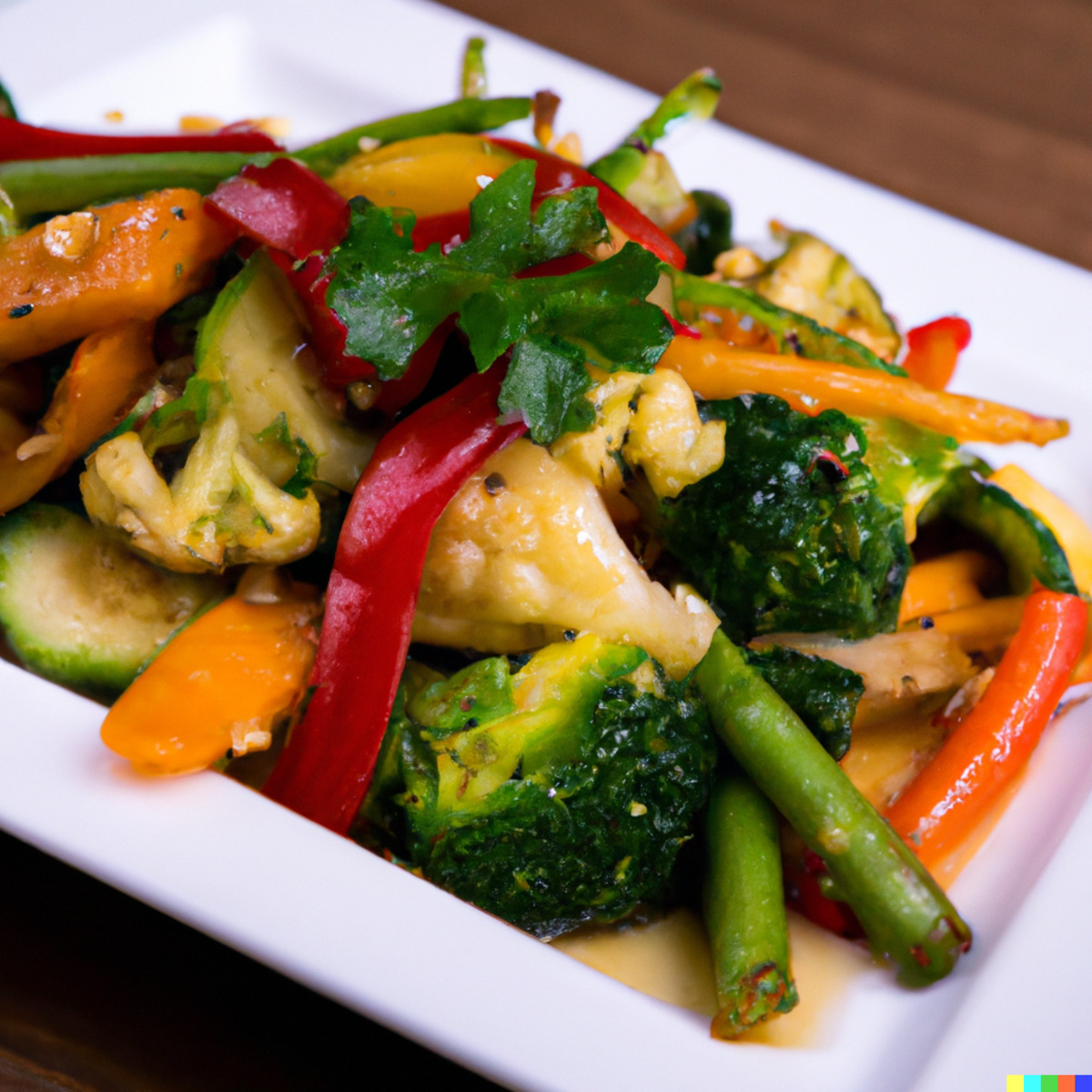
Jump to:
Are you in the mood for something that's not only mouthwateringly delicious but also quick and easy to make? Look no further than this vibrant Vegetable Stir Fry. This dish is the epitome of fresh and fast, packed with an array of colorful vegetables like bell peppers, zucchini, sugar snap peas, broccoli, mushrooms, and baby corn. You'll love the crunch and burst of flavors in every bite!
What sets this stir fry apart is its sheer versatility. Whether you're a seasoned chef or new to the kitchen, this recipe has something for everyone. You can mix and match veggies based on what you have on hand or what's in season, making it perfect for any time of the year. And with a cook time of just 10 minutes, you can whip up a delicious main course that looks like it took hours to prepare. So grab your wok or skillet and let's get cooking!
Substitutions for Vegetable Stir Fry
Hey there! If you're looking to make some changes to this Vegetable Stir Fry, you're in luck because this recipe is super flexible. Here are some ideas:
- Vegetable Oil: If you're out of vegetable oil, you can easily use olive oil, canola oil, or even coconut oil for a different flavor.
- Soy Sauce: No soy sauce? No problem! You can substitute with Tamari for a gluten-free option or even use coconut aminos for a soy-free choice.
- Oyster Sauce: If you're vegan or just don't have oyster sauce, you can use a vegan oyster sauce made from mushrooms or simply use hoisin sauce.
- Fresh Ginger and Garlic: If you're in a pinch, ground ginger and garlic powder can work. Use about ¼ teaspoon of ground ginger and ⅛ teaspoon of garlic powder as substitutes for each.
- Vegetables: The beauty of a stir fry is its versatility. Feel free to swap out any veggies you don't have or don't like. Carrots, cauliflower, and green beans are all great options.
- Rice Vinegar: If you don't have this, white wine vinegar or even apple cider vinegar can do the trick.
- Honey: For a vegan alternative, you can use maple syrup or agave nectar. If you're avoiding added sugars, you can leave this out altogether.
- Fresh Cilantro: Not everyone is a fan of cilantro. If that's you, fresh parsley or even green onions can serve as a good garnish.
Tips and Tricks
Hello again, my fellow foodies! If you're looking to master the art of stir frying vegetables, you've come to the right place. Let's expand on those tips and tricks to help you whip up the best Vegetable Stir Fry of your life.
- High Heat is Key: The essence of stir frying is cooking quickly over high heat. Make sure your wok or skillet is hot before adding the oil; this ensures a quick sear and locks in the flavors. If your pan isn’t hot enough, you risk steaming your vegetables rather than frying them.
- Prep Ahead: The stir fry process happens fast, and there’s no time to chop veggies on the fly. Prep all your ingredients ahead of time. Consider using a 'mise en place' approach—organizing and setting up everything you'll need before you start cooking.
- Use the Right Oil: The choice of oil can greatly affect the outcome. Oils like vegetable, canola, or grapeseed have high smoke points, making them ideal for stir frying. Olive oil and butter, while delicious, can smoke and burn easily, giving your dish an off taste.
- Uniformity Matters: To ensure even cooking, try to cut all your veggies to approximately the same size. It not only helps in cooking but also elevates the visual appeal of your dish. Invest in a good knife to make this process even smoother.
- Don't Overcrowd the Pan: An overloaded pan will drop the temperature and cause your veggies to steam instead of fry. If you’re cooking a large amount, do it in batches to maintain that high heat and quick cooking time.
- Taste as You Go: Don't just rely on the recipe's measurements for salt and sauce. Vegetables and sauces can have varying salt levels. A quick taste test before serving can be the difference between good and great.
- Freshness Factor: Fresh veggies have more natural sugars, making them not only crunchier but also more flavorful. If possible, use seasonal vegetables—they’re usually fresher and cheaper.
- Garnish Game: While cilantro is a classic garnish, you can up your game by adding things like toasted sesame seeds, chopped peanuts, or even a dash of lime or lemon juice for extra zing. These additions provide contrasting textures and flavors.
- Leftovers: Leftovers are gold. They can be used as a filling for wraps, an addition to salads, or as a topping for a rice bowl. However, keep in mind that when reheating, it's best to do so over low heat to maintain texture as much as possible.
- Sauce Consistency: If you prefer your stir fry to have a thicker sauce, you can mix a teaspoon of cornstarch with a tablespoon of cold water and add it to the sauce for that extra clingy texture. Just remember to cook it for an extra minute to remove the raw cornstarch taste.
- Adding Protein: If you want to make this stir fry into a complete meal, consider adding thinly sliced chicken, beef, or tofu. Cook the protein first, remove it from the pan, and then proceed with the recipe as written, adding the cooked protein back in at the end.
- Spice it Up: For those who love a bit of heat, consider adding a sliced chili or a few shakes of red pepper flakes. If you have kids or others who prefer less heat, serve spicy condiments like Sriracha or chili oil on the side.
- Invest in a Good Wok: If you find yourself stir frying frequently, a good wok can be a game-changer. It distributes heat more evenly and makes tossing those veggies a breeze.
- Deglaze the Pan: After you're done cooking, there might be tasty bits stuck to the bottom of the pan. A splash of broth or white wine can lift those up, making for an even more flavorful sauce.
Storing, Freezing, and Reheating: A Handy Guide
Let's talk about one of the most practical aspects of cooking—what to do with leftovers. Even a dish as delicious as this Vegetable Stir Fry might leave you with extras, so here's how to handle them like a pro.
Storing
- Short-Term: If you're planning to eat the leftovers within a couple of days, simply store them in an airtight container in the fridge. They'll keep well for about 2-3 days.
- Make-Ahead Sauce: If you find yourself making this dish often, you can make the sauce in a larger quantity and store it in the fridge for up to a week. Just shake or stir well before using.
Freezing
Freezing stir fry is a bit tricky because of the high moisture content in the vegetables. They can become mushy upon thawing. However, if you're okay with a slight texture change, here's how to go about it:
- Cool Completely: Make sure the stir fry is completely cooled before transferring it to a freezer-safe bag or container.
- Single Layers: If possible, spread the vegetables out in a single layer in the bag. This helps in freezing them individually and makes reheating easier.
- Sauce: If you haven't mixed the sauce into the stir fry yet, consider freezing it separately. It tends to freeze better on its own.
- Duration: The stir fry can be stored in the freezer for up to 2 months. Beyond that, the flavors and textures may start to deteriorate.
Reheating
- Microwave: This is the quickest method. Place the stir fry in a microwave-safe dish and heat at 50% power in 1-minute intervals, stirring in between, until warmed through.
- Stovetop: If you have more time and want to revive the dish closer to its original glory, use the stovetop. Heat a pan over medium heat, add the stir fry, and cook until it's heated through. You may need to add a splash of water or extra sauce to bring it back to life.
- Oven: Preheat your oven to 350°F (175°C). Place the stir fry in an oven-safe dish and cover with aluminum foil. Bake for about 10-15 minutes, or until heated through.
- From Frozen: If you’ve frozen your stir fry, it's best to let it thaw overnight in the fridge before reheating. This helps maintain the texture as much as possible.
Recipe

Vegetable Stir-Fry
Equipment
- Stirring utensil
Ingredients
- 2 tablespoons vegetable oil
- 2 cloves garlic minced
- 1 teaspoon grated fresh ginger
- 1 medium red bell pepper thinly sliced
- 1 medium yellow bell pepper thinly sliced
- 1 medium zucchini thinly sliced
- 1 cup sugar snap peas trimmed
- 1 cup broccoli florets
- 1 cup mushrooms sliced
- 1 cup baby corn halved lengthwise
- 2 tablespoons soy sauce
- 1 tablespoon oyster sauce
- 1 tablespoon rice vinegar
- 1 teaspoon sesame oil
- 1 teaspoon honey optional
- Salt and pepper to taste
- Fresh cilantro leaves for garnish
Instructions
- Prepare all the vegetables by washing, trimming, and slicing them as directed in the ingredients list.
- In a small bowl, combine the soy sauce, oyster sauce, rice vinegar, sesame oil, and honey (if using). Mix well and set aside.
- Heat the vegetable oil in a wok or large skillet over medium-high heat. Add the minced garlic and grated ginger, and stir-fry for about 30 seconds until fragrant.
- Add the sliced bell peppers, zucchini, sugar snap peas, broccoli florets, mushrooms, and baby corn to the wok. Stir-fry for about 3-4 minutes, until the vegetables are crisp-tender but still retain their vibrant colors.
- Pour the sauce mixture over the vegetables in the wok, and toss everything together to coat evenly. Cook for an additional 1-2 minutes until the sauce has slightly thickened and coats the vegetables.
- Taste the stir-fry and season with salt and pepper if needed.
- Transfer the vegetable stir-fry to a serving platter, garnish with fresh cilantro leaves, and serve immediately.
Notes
Nutrition
Vegetable Stir Fry - FAQ
Yes, you can use frozen vegetables, but the texture and flavor may vary slightly. Frozen vegetables are often pre-cooked to some degree, so you may need to adjust the cooking time to avoid overcooking them. If using frozen, skip the thawing process to maintain the best texture.
Yes, if you don’t have a wok, you can use a large skillet or frying pan. The key is to use something with high sides to accommodate all the vegetables and sauce.
Stir-fries are best served immediately after cooking to enjoy the crisp-tender texture of the vegetables. However, you can chop all the vegetables and prepare the sauce in advance to save time.
This stir fry pairs well with steamed white rice, brown rice, or even quinoa. You can also serve it over noodles or as a side to a protein like chicken, tofu, or shrimp.
Yes, you can easily add your choice of thinly sliced meat such as chicken, beef, or shrimp. Make sure to cook the meat first before adding the vegetables.
The vegetables should be "crisp-tender," meaning they're cooked but still have a bit of crunch. The colors should remain vibrant. Overcooked vegetables will lose their color and become mushy.








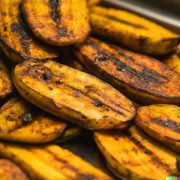





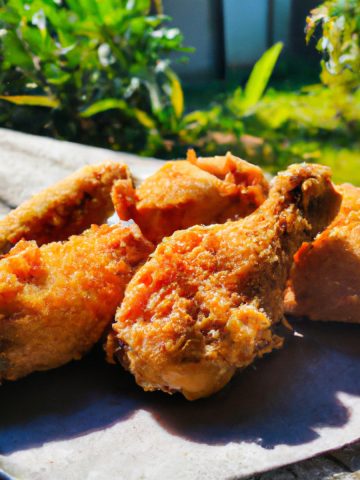
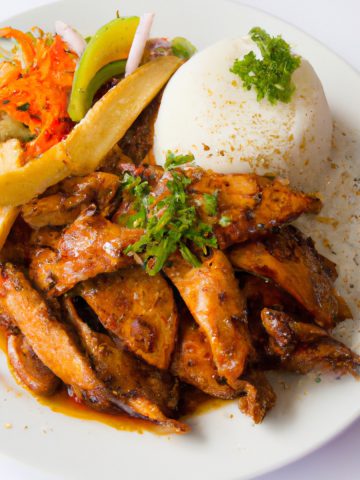
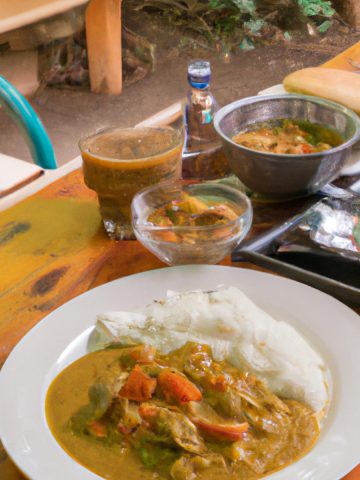
Lane says
I love making this for a quick dinner
MIke Baker says
This was my first stir-fry recipe